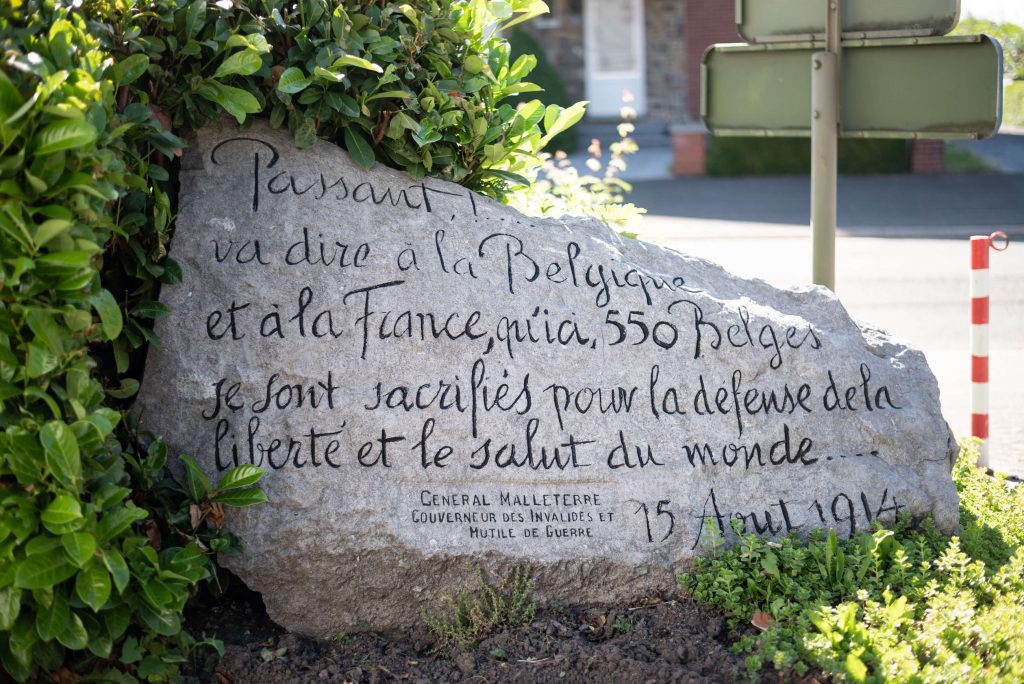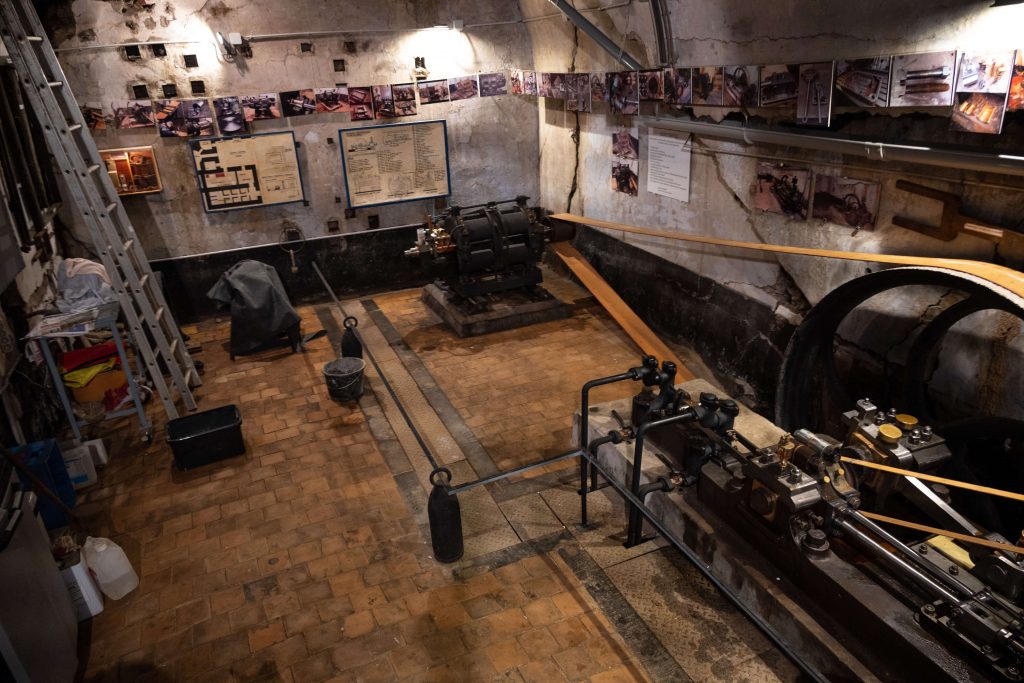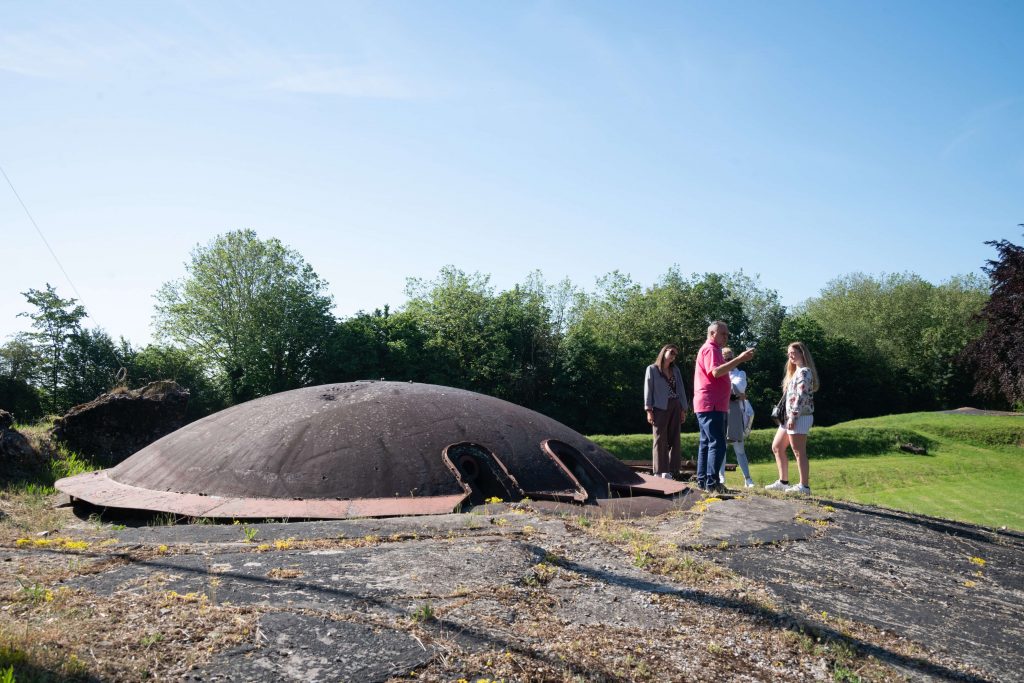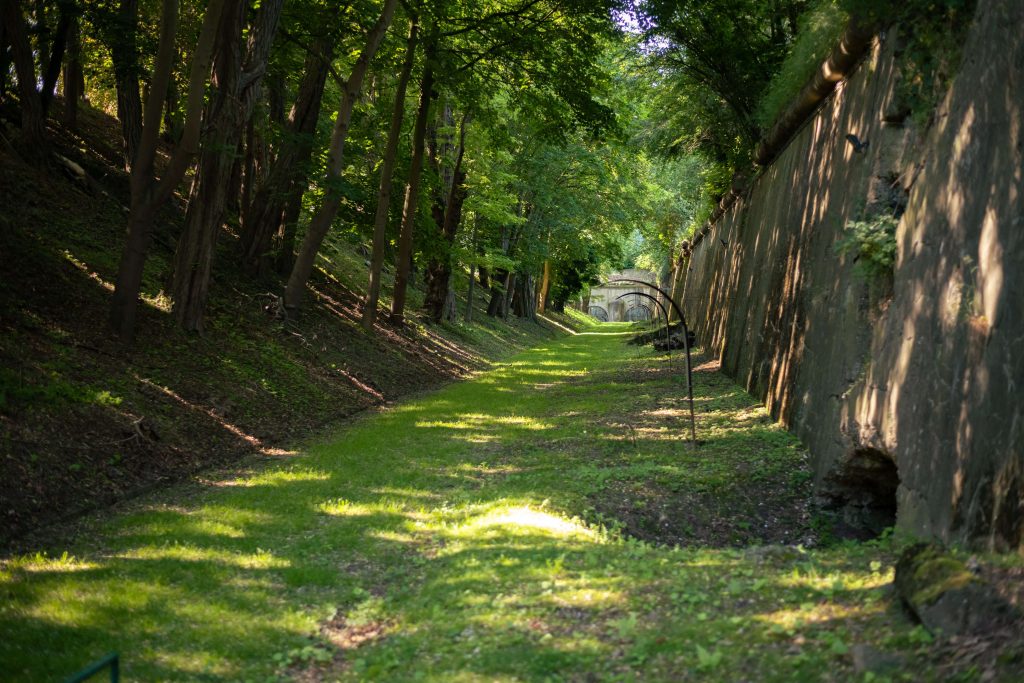
With its triangular base of about 300 meters and strategic position, Fort Loncin was an essential part of the fortified belt of Liege. It is located seven kilometers west of Liège.
Fort Loncin was one of the first strongholds massively bombed in August 1914 by the German army. On August 15 of that year, “Big Bertha,” a colossal cannon used for the first time in history, fired a shot that instantly blew up the fort’s powder magazine and destroyed the center of the fort. This killed 350 of the 550 soldiers present on the site. Despite this tragedy, Fort Loncin was the only fort in the Liège defense system that did not surrender.
Today, most of the victims of this explosion still lie under the rubble. A crypt was built to house the bodies of those found. Vast operations to clear the fort were conducted, during which 3,500 shells were discovered. The fort was then converted into a military cemetery. It received the title of National Cemetery in 2014 by King Philippe. Georges Petit sculpted a commemorative monument, inaugurated in 1923. Admired for the tenacity of its defenders, the Fort Loncin holds a special place in Belgian history.
Fort Loncin remains one of the most important testimonies of the Belgian fortifications. It is the only one to have kept its original equipment intact.
To explore this fort and experience its history, guided tours or audio guides in four languages are available. In addition, there is a museum that allows visitors to discover a multitude of objects. They testify to the life of the young soldiers of the fort’s garrison. It also allows you to relive the explosion of the fort, an intense moment full of emotion. Finally, you can combine your visit with that of Fort Lantin, another must-see destination.


